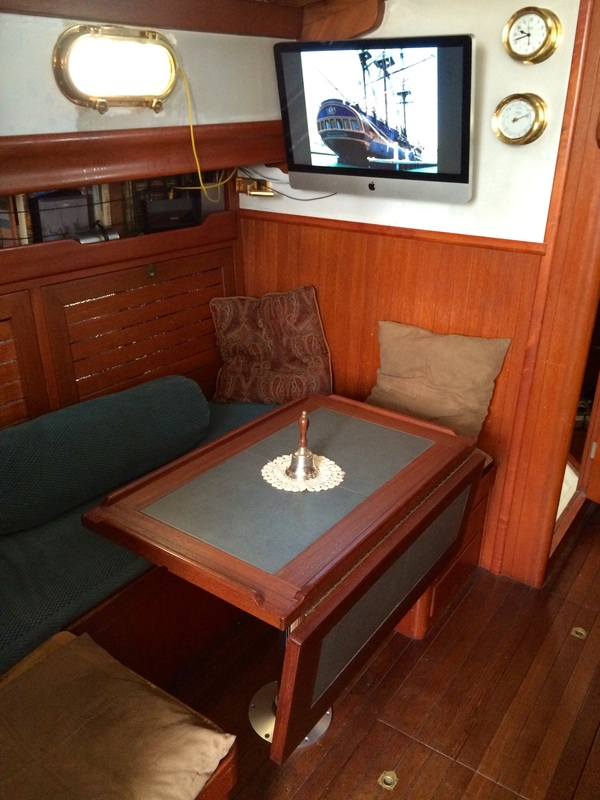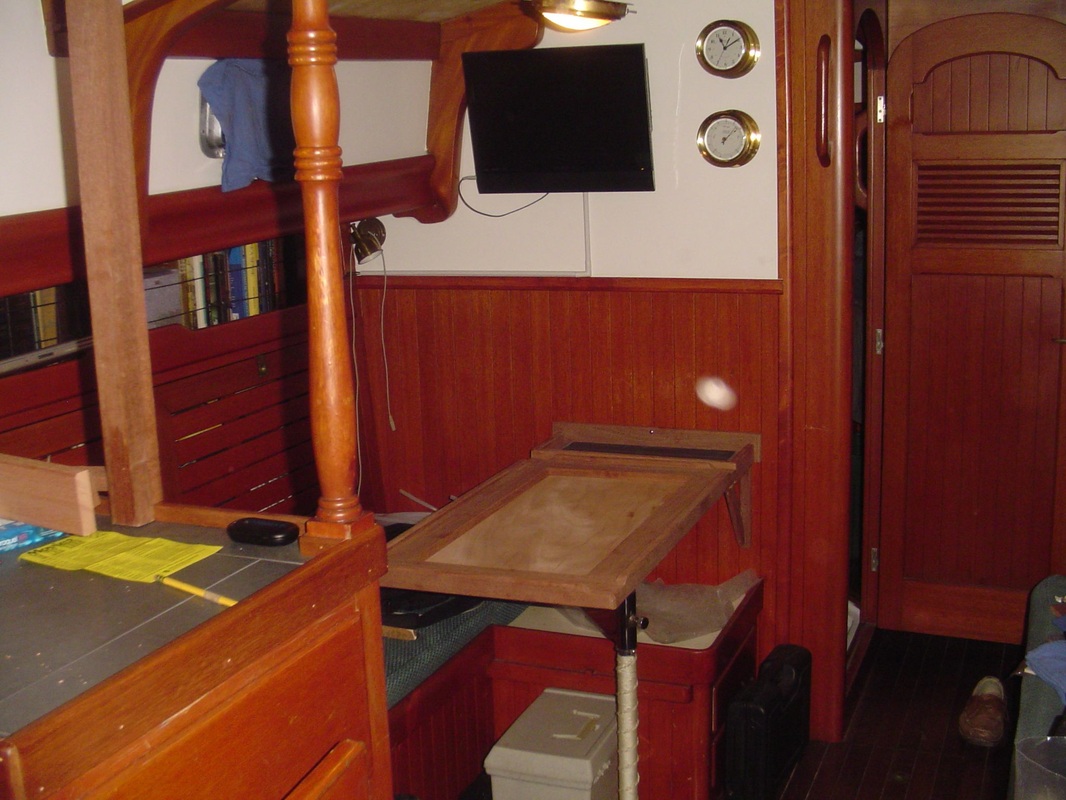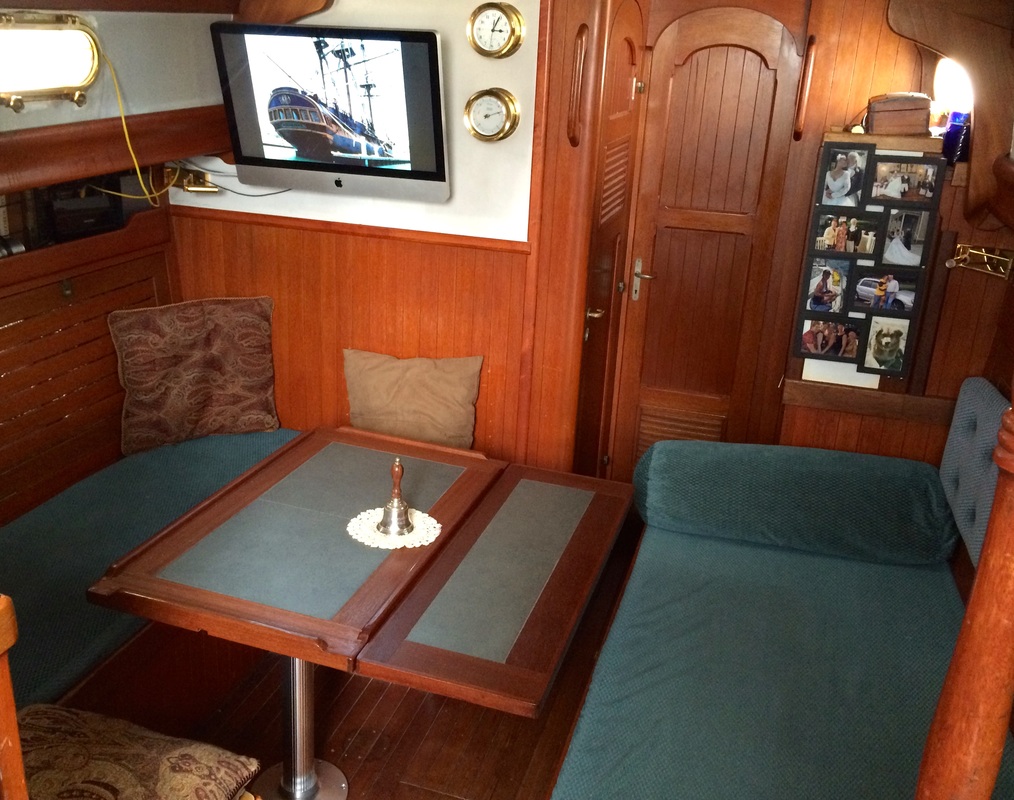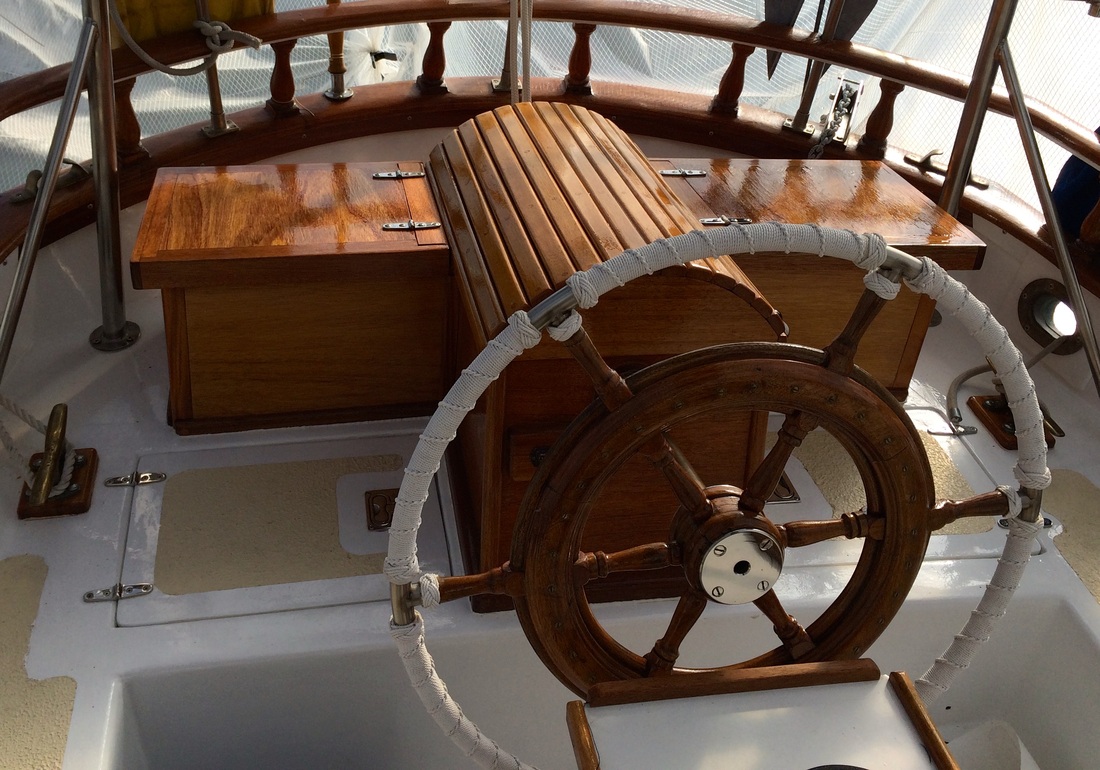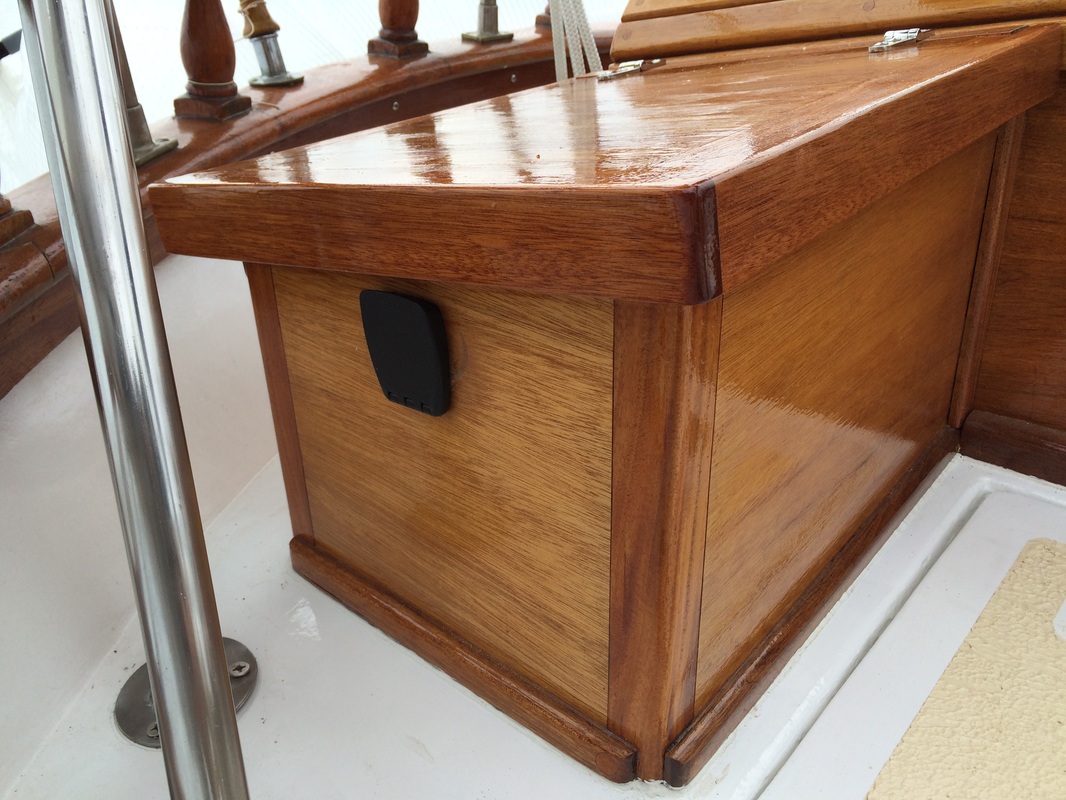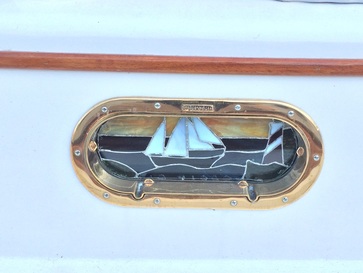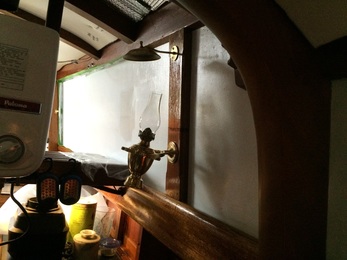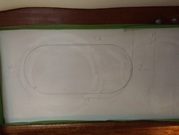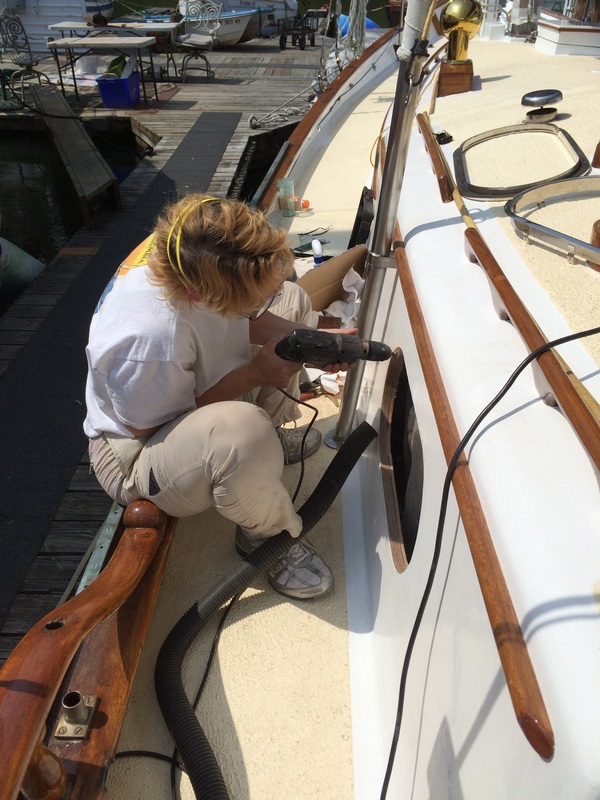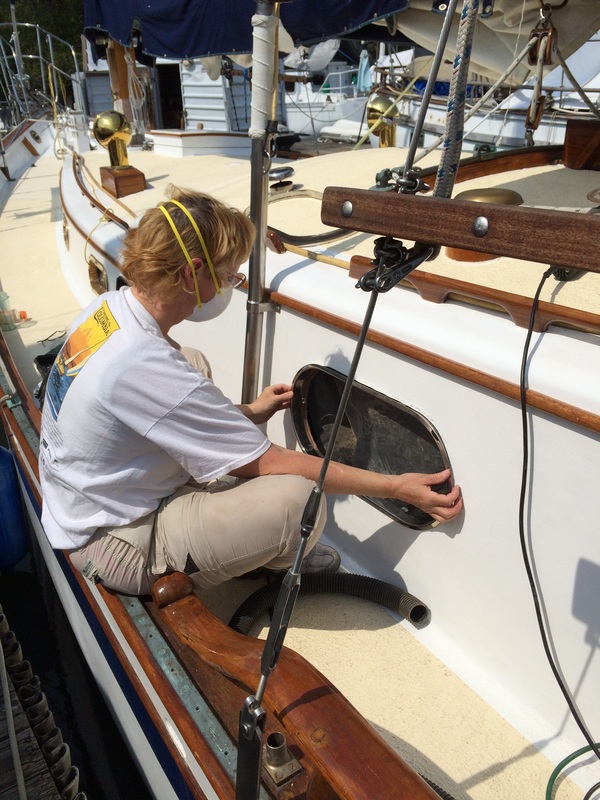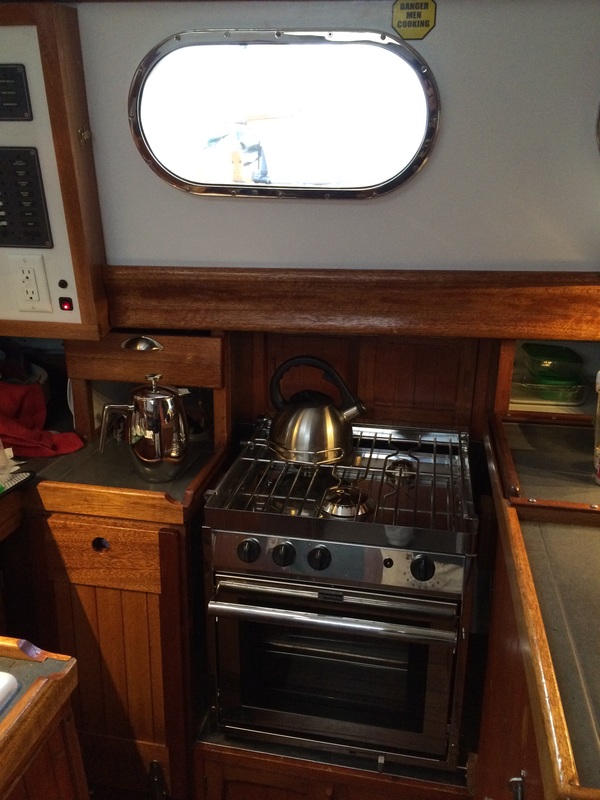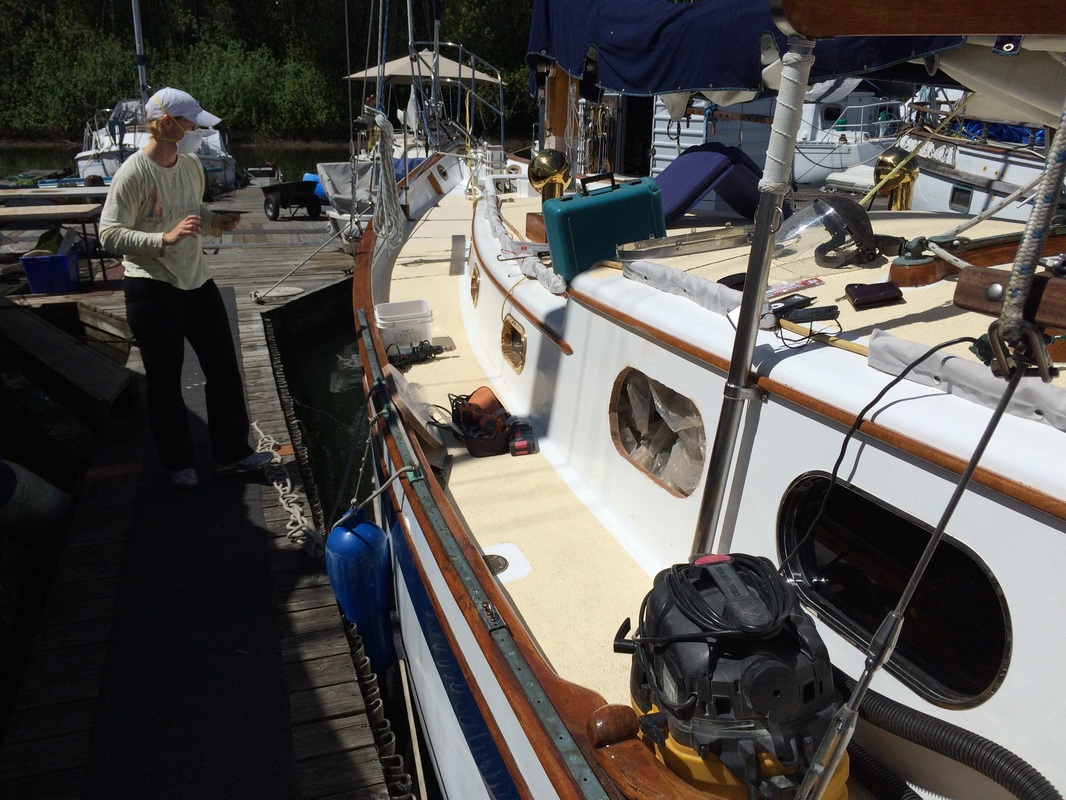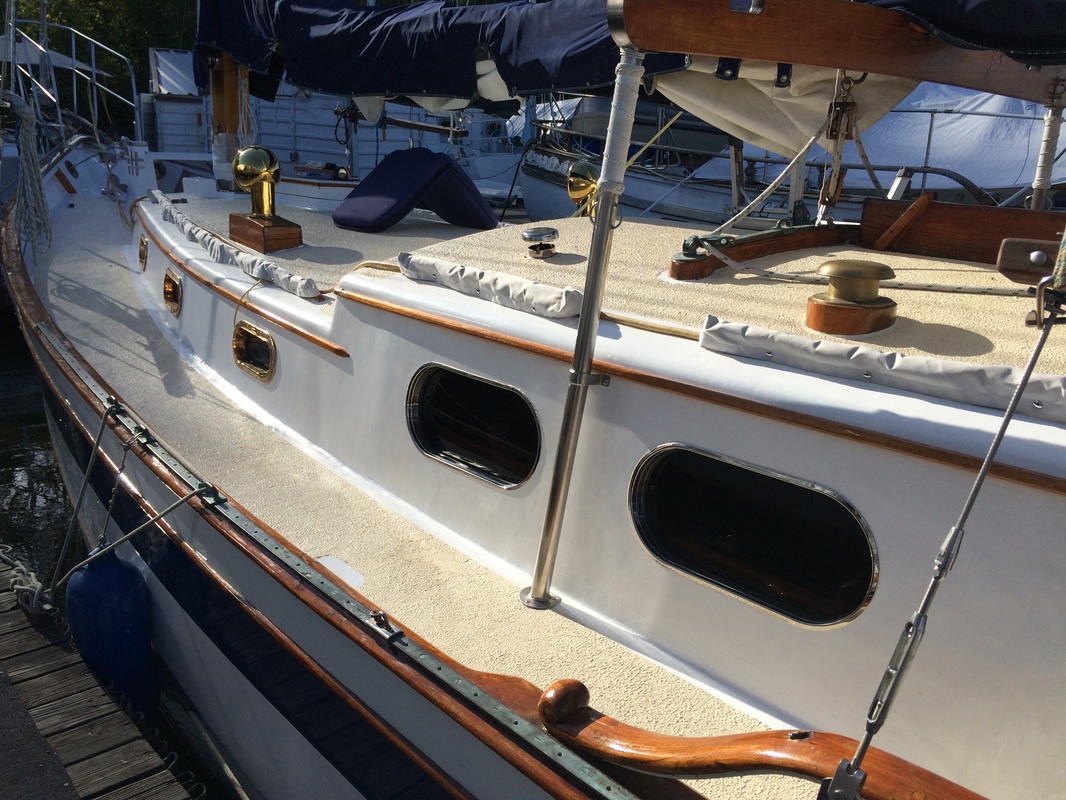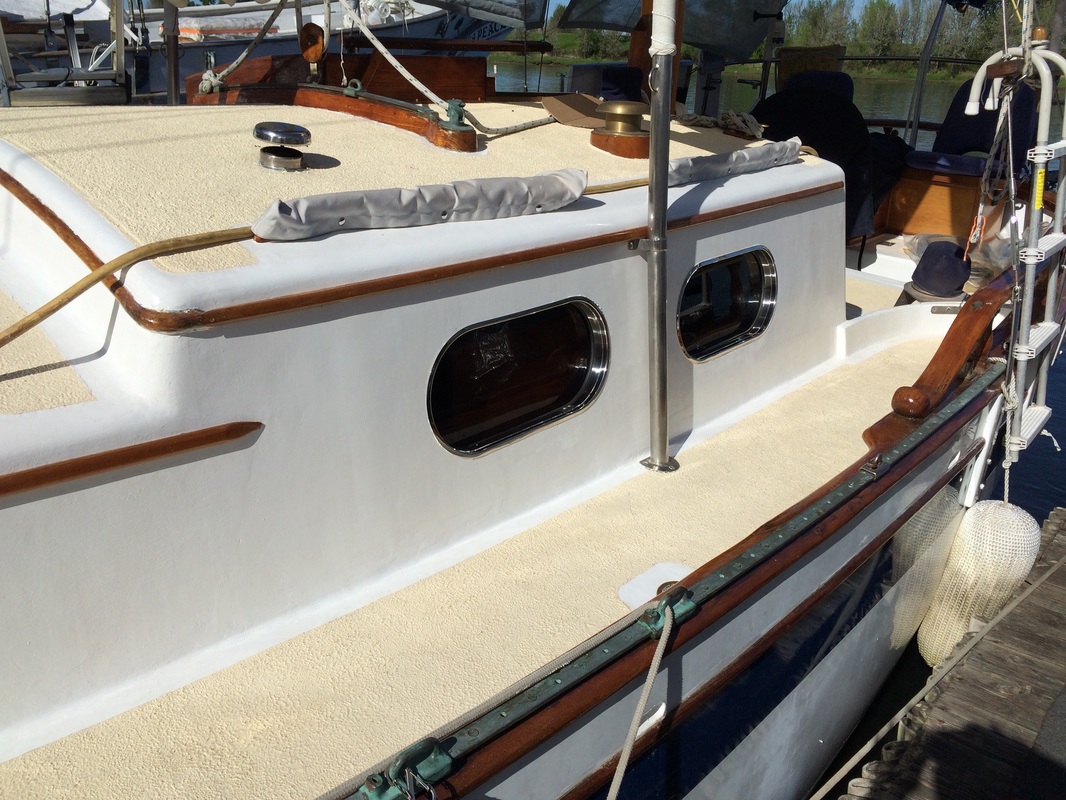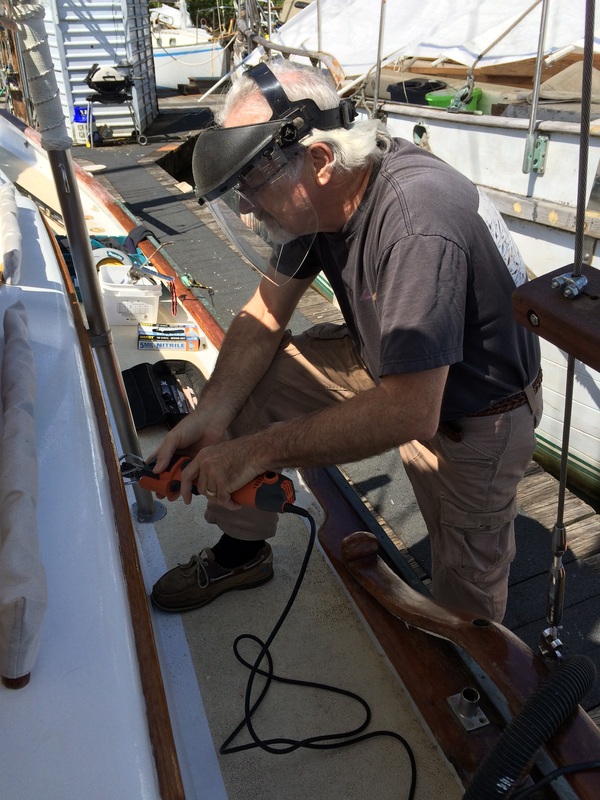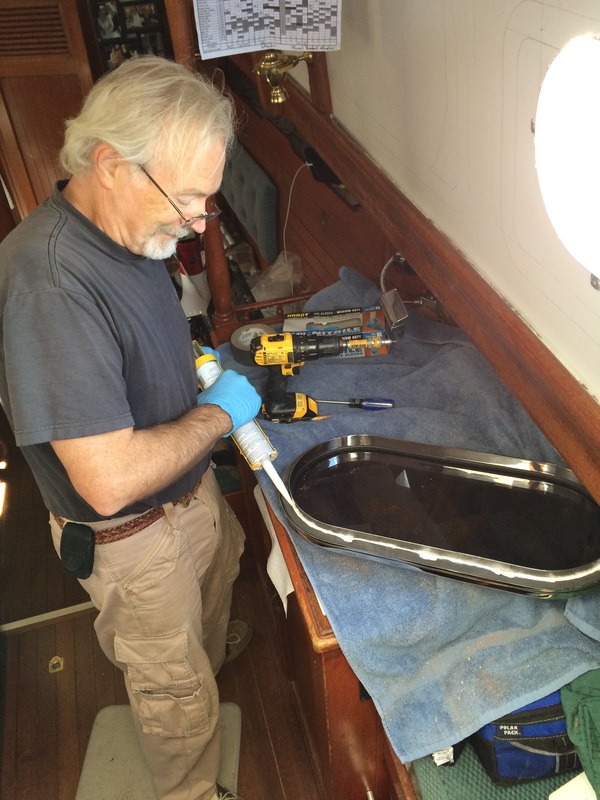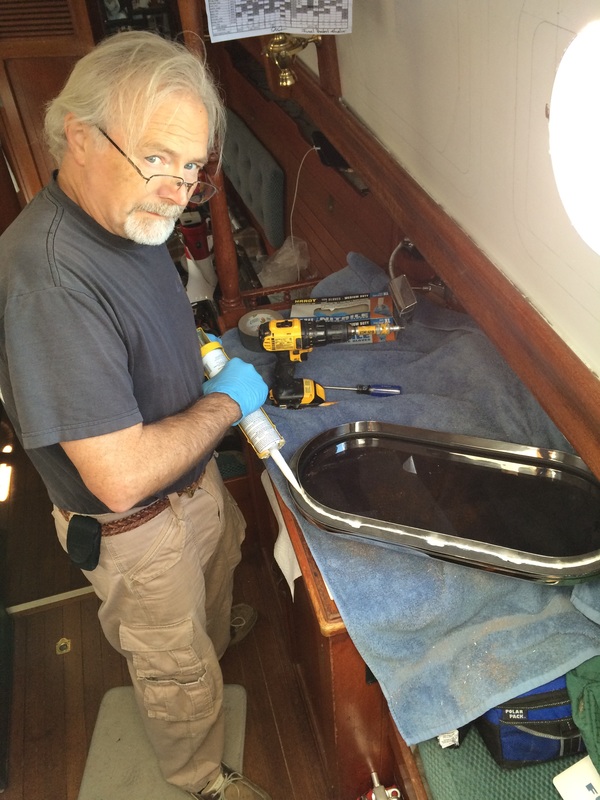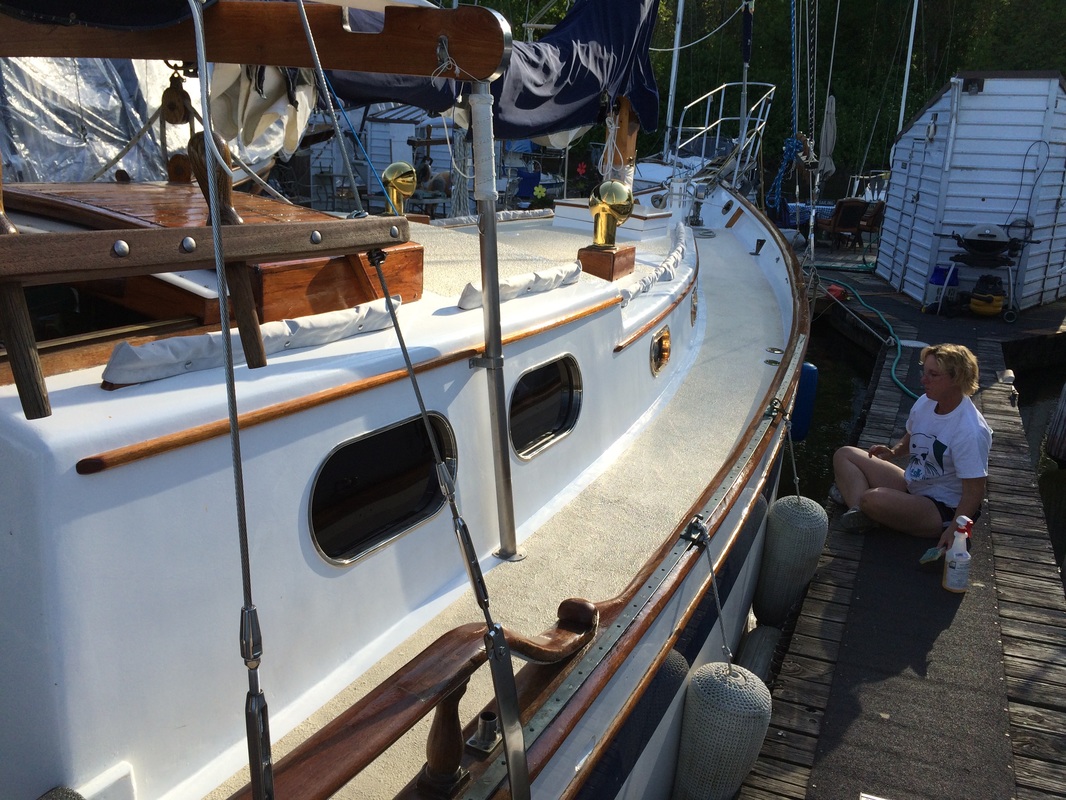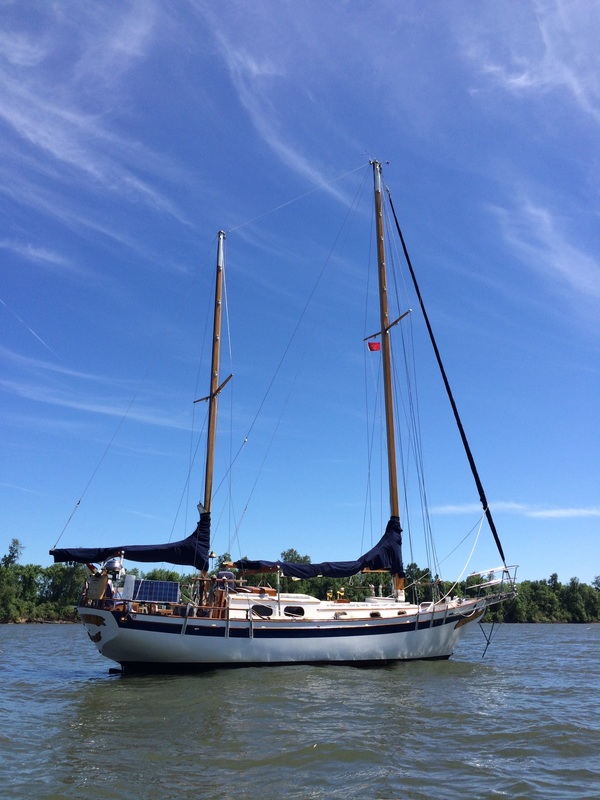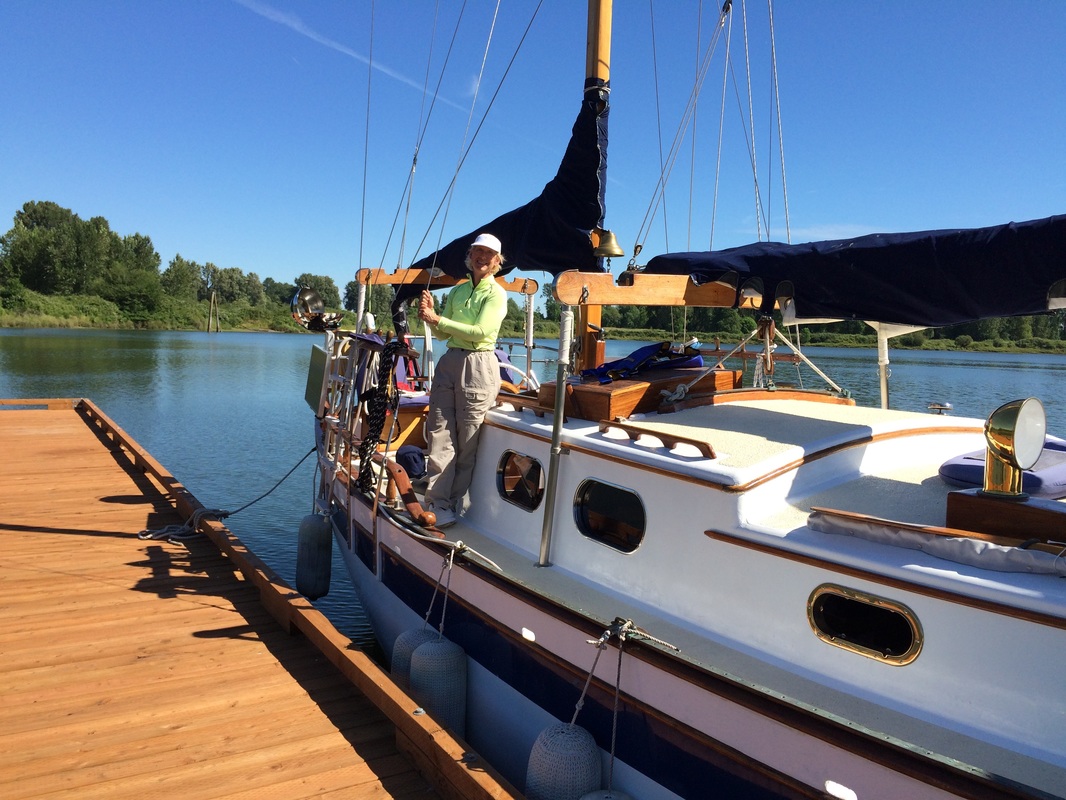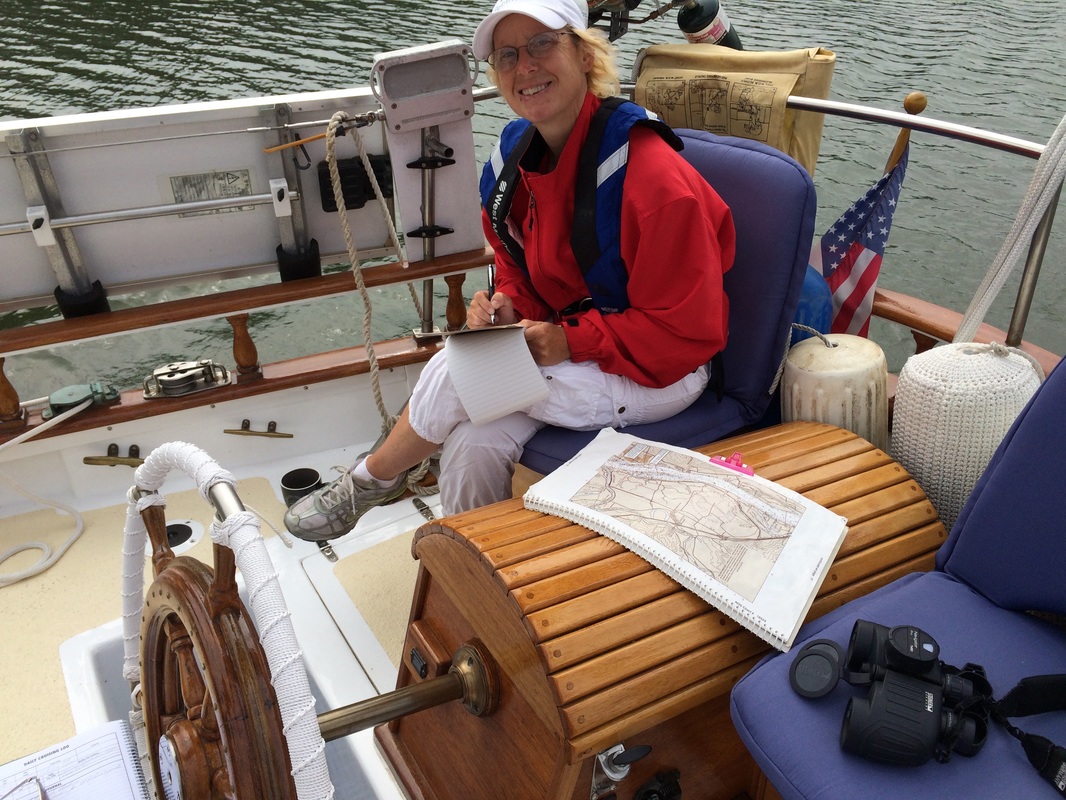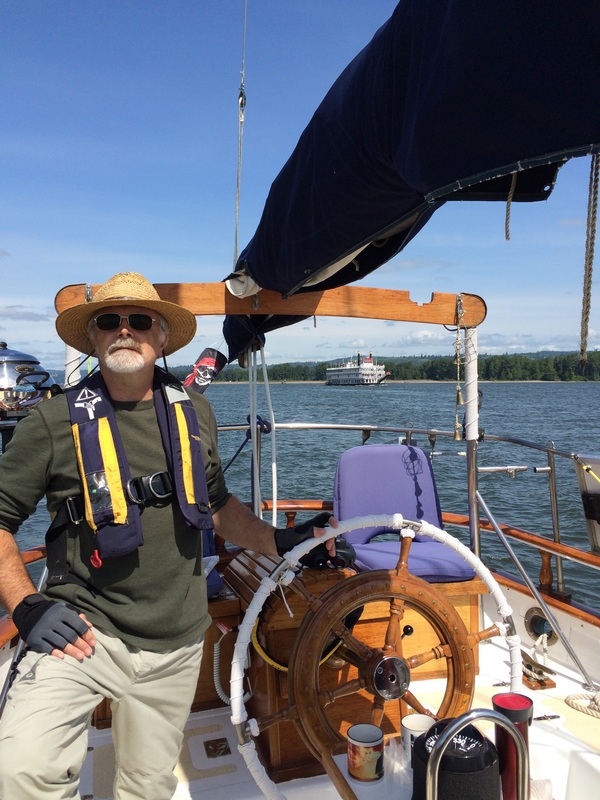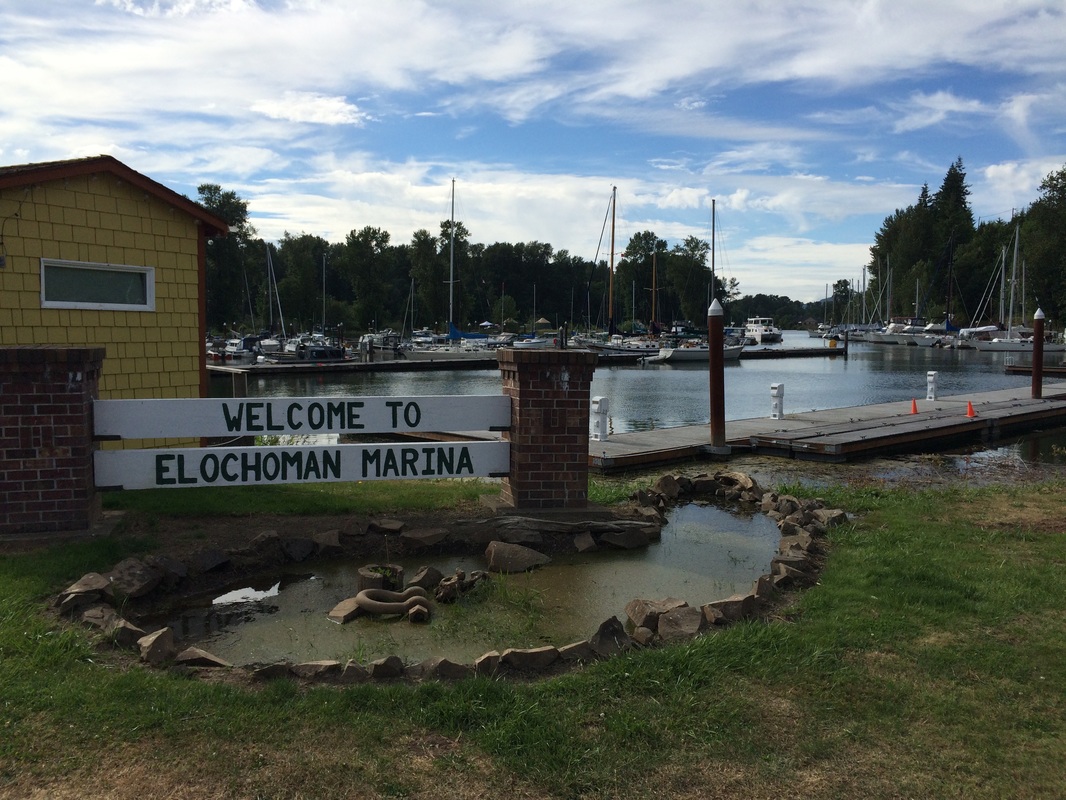Winter, 2015
There was no Winter, to speak of, in this part of Oregon this year. Which made it an ideal time to set up tents and do boat work!
Having space to use a table saw can be challenging when one doesn't have a real shop to work in. The work goes outdoors. And since Michael has been lending a hand rebuilding the saloon and galley of our neighbors' the Nelson/Winkler clan's Toketee, which required cutting large pieces of marine plywood, the weather proved most accommodating.
And we had a some time to finish up a few of the unending projects on Moontide, as well.
Having space to use a table saw can be challenging when one doesn't have a real shop to work in. The work goes outdoors. And since Michael has been lending a hand rebuilding the saloon and galley of our neighbors' the Nelson/Winkler clan's Toketee, which required cutting large pieces of marine plywood, the weather proved most accommodating.
And we had a some time to finish up a few of the unending projects on Moontide, as well.
|
Enter Gabrielle: after 6 years living aboard, she commented that she would like to have that seating back. The challenge for us was to find a way to re-center the table, and still give us accessibility to the seating.
Then at a boat show, Gabrielle discovered a sliding table in a new boat's salon -- these new boats do have SOME purpose -- and we began our search for a fixture that would be strong enough to work in our saloon. Did we mention that the table top is HEAVY?, On line, we eventually found something we thought would work. |
Enter, Kim at Columbia Marine Exchange. She was able to order the piece we needed at the right price and have them shipped to us. We are grateful!
Now, as you can see, with table repositioned, the side leaf up and settees extended, we can seat 6 people easily (and even comfortably) in our saloon.
Now, as you can see, with table repositioned, the side leaf up and settees extended, we can seat 6 people easily (and even comfortably) in our saloon.
Up on Deck...
Plastic seals our little boat in for Winter, and works as a greenhouse for any sun that appears. It made it easy to finish up installing our lids for the propane 'saddlebags' nestled on either side of 'saddle' helm seat on Moontide's cockpit.
|
As you can see, the hinged lids latch on the sides, and include a locking mechanism to keep the tanks in place while voyaging. It also makes seating a lot more comfortable than sitting on the tank 'holes'!!
Although there are several more projects to complete, the cockpit area is really beginning to take shape. |
Spring 2015 --Leaks shall not be tolerated...
When you can find them. One of the precipitating factors (pardon the pun) for closing over the decks last Fall was that our Hatch on the main companionway had seen better days -- nay, it was falling apart in places. If it rained, it didn't matter whether the hatch was opened or not. We got wet.
Gabrielle had spent innumerable hours stripping, sanding and recalking the 'turtle' portion of the main hatch (the 'garage' for the hatch when it's opened) and although her work is beautiful, we opted to take a slightly different approach to the hatch itself.
When the Mariner 40s were built, part of the original design was an acrylic lid for the hatch over the forward cabin. In 2012, we replaced that lid with new acrylic, and it seems to work well for us. Keeping that style in mind, we replaced the main hatch with white acrylic as well.
Gabrielle had spent innumerable hours stripping, sanding and recalking the 'turtle' portion of the main hatch (the 'garage' for the hatch when it's opened) and although her work is beautiful, we opted to take a slightly different approach to the hatch itself.
When the Mariner 40s were built, part of the original design was an acrylic lid for the hatch over the forward cabin. In 2012, we replaced that lid with new acrylic, and it seems to work well for us. Keeping that style in mind, we replaced the main hatch with white acrylic as well.
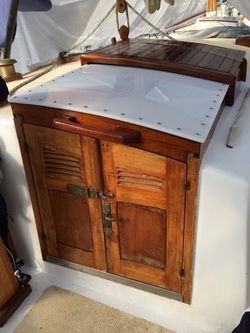
Less traditional, perhaps, but certainly not out of character for the style of Moontide.
As you can see in this photo, The original sliders have been kept, a new pull handle was constructed from african mahogany, and the turtle remains original.
The doors, unfortunately, still need work.
Well, put it on 'the List.' There's still plenty of Spring left to Spring!
As you can see in this photo, The original sliders have been kept, a new pull handle was constructed from african mahogany, and the turtle remains original.
The doors, unfortunately, still need work.
Well, put it on 'the List.' There's still plenty of Spring left to Spring!
May, 2015
Nice weather draws people out of their boats and into the projects that Winter held at bay.
Michael had sidestepped installing the four Bomar deadlights we had purchased last Fall. He said he was psychologically avoiding the chance to 'screw up' after such a successful Summer and Autumn of boat work.
Michael had sidestepped installing the four Bomar deadlights we had purchased last Fall. He said he was psychologically avoiding the chance to 'screw up' after such a successful Summer and Autumn of boat work.
Fortunately, things lined up nicely. Despite Michael's swearing and hammering, the second window was installed without incident. The windows lined up nicely with the cabin trim, which was good. Realigning the cabin trim itself seemed a poor alternative.
A week later, we attacked the starboard side.
Summer 2015
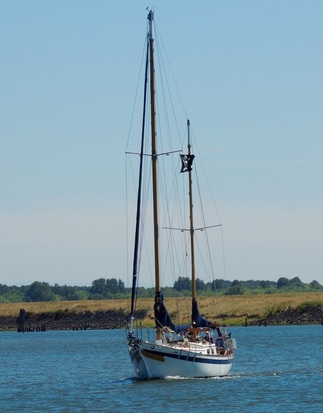
Michael took all of June off work with the hopes of getting Moontide away from the dock and doing some cruising on the Columbia.
On June 4th, we cast off lines, and backed the boat into a 4knot cross current!
With much yelling/swearing and fending away docked boats, the Moontide crew was able to push free of the dock and with trembling hands turn the boat downstream towards the Columbia.
We almost mad it to St. Helens Within 100 yards of the dock at Sand Island, steam began spewing from the engine compartment and up through the steering box. We had to shut the engine down.
By then, current and a 15knot wind was blowing us in the opposite direction, so we pointed the boat back upstream and Gabrielle sailed with the headsail clear of traffic lanes while Michael dove into the engine space to try to find what was wrong.
A couple miles back up the channel, we found a reasonable spot and dropped anchor for the night. Settled there, we contemplated what was causing the fresh water cooling system to
boil over, but could conclude nothing without opening up parts of the engine.
Instead, we had a nice supper, watched herons and osprey fishing along the shore, and savored the frequent wafts of baking bread drifting down from somewhere around St Helens.
On June 4th, we cast off lines, and backed the boat into a 4knot cross current!
With much yelling/swearing and fending away docked boats, the Moontide crew was able to push free of the dock and with trembling hands turn the boat downstream towards the Columbia.
We almost mad it to St. Helens Within 100 yards of the dock at Sand Island, steam began spewing from the engine compartment and up through the steering box. We had to shut the engine down.
By then, current and a 15knot wind was blowing us in the opposite direction, so we pointed the boat back upstream and Gabrielle sailed with the headsail clear of traffic lanes while Michael dove into the engine space to try to find what was wrong.
A couple miles back up the channel, we found a reasonable spot and dropped anchor for the night. Settled there, we contemplated what was causing the fresh water cooling system to
boil over, but could conclude nothing without opening up parts of the engine.
Instead, we had a nice supper, watched herons and osprey fishing along the shore, and savored the frequent wafts of baking bread drifting down from somewhere around St Helens.
|
The next morning, we checked hose fittings, changed out the raw water impeller, cleaned the raw water filter (even thought it appeared clean), refilled the water reservoir and started the engine. It seemed to be running fine.
But when we went to pump the fresh water out from the bilge, the bilge pump didn't pump. And the alternator -- all of a sudden -- didn't seem to be charging the batteries. The captain decided it would be better to go home with all these problems than go on, But when he threw the switch to weigh anchor, nothing happened. 70' of 3/8" chain later, all hauled by hand, Moontide started back upstream for Pirates Cove. |
|
Fortunately, repairs, once back on the dock, entailed much less expense and effort than the crew had anticipated. A new radiator cap with the correct pressure release solved one problem. Tightening the alternator belt got the alternator charging again. And cleaning the battery posts on the house batteries was all it took to get the windlass functional again.
We figured that the boiling water had overcome the bilge pump, and simply replaced it with a new one. Special thanks to Larry Hanson and Dar Nelson for their help in troubleshooting Moontide's ailments. After a week of rechecking systems, we decided to head out again. This time our exit from the marina was flawless. The engine seemed to be running quite nicely, and we headed north downstream to the Columbia river without incident. Docked inside Martin Island, WA. Tricky with the river so low.
|
Gabrielle Checking the river chart.
Sternwheeler off the stern!
|
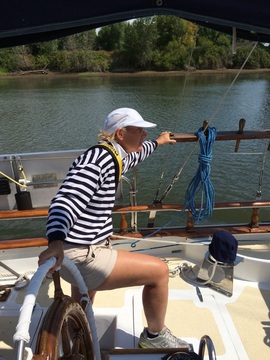
We had never before sailed into Elochoman's Marina, so the fact that our second trip was uneventful made for a much more enjoyable adventure. Aside from the occasional squall, weather was mild, and the wind was so light, it wasn't worth the trouble of setting a sail.
Going up the Puget Channel, though, it was helpful to have had some local knowledge shared with us to keep from running aground entering the marina! With 6' of draft and a full keel, Moontide needs a fair amount of water under her to stay afloat!
Going up the Puget Channel, though, it was helpful to have had some local knowledge shared with us to keep from running aground entering the marina! With 6' of draft and a full keel, Moontide needs a fair amount of water under her to stay afloat!
Elochoman Marina, just north of Puget Island on the Columbia.
